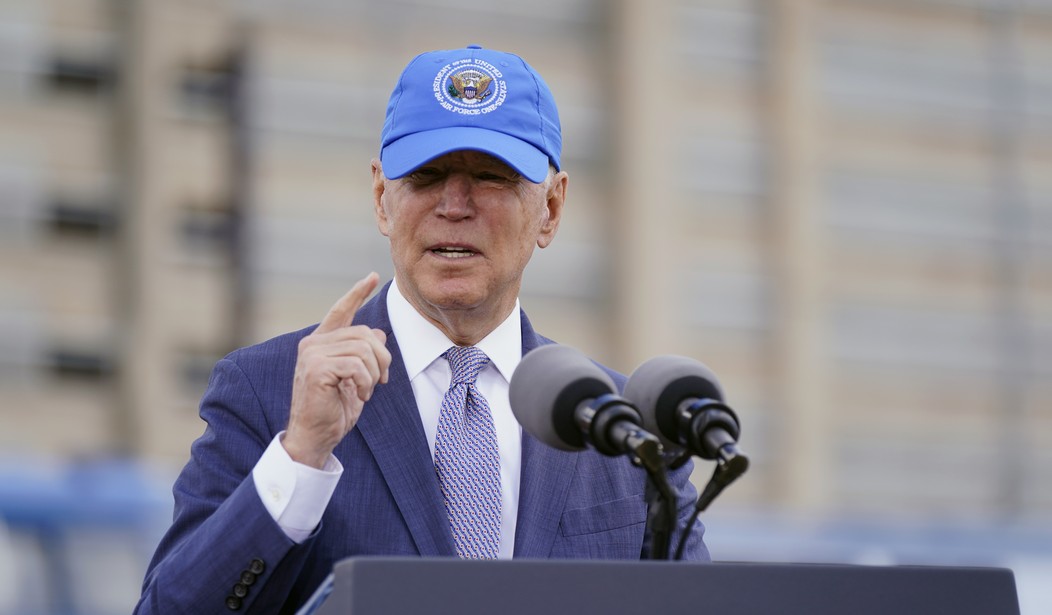The Democrats say it’s not true, but it is. If you give out oodles of unemployment benefits, people aren’t going back to work. It’s not a small number either. This comes on the heels of an absolutely garbage jobs report which had a projection of one million jobs. It was really 266,000. It was so bad that CNBC host Steve Liesman thought it was a typo.
Biden and his clown crew tried to explain how missing the mark by over 700,000 jobs was a good thing. When you’re explaining, you’re losing. Period. People can do the math, Joe. Missing the mark by that much isn’t salvageable. You can’t polish a turd. It’s a garbage jobs report.
Peter Doocy battles Jen Psaki over whether the Biden administration's massive unemployment benefits is disincentivizing people from wanting to return to work.
— Curtis Houck (@CurtisHouck) May 10, 2021
Psaki disagrees, citing the lack of "livable, working wage" in jobs, schools being closed, and expensive child care. pic.twitter.com/vOEomgMwC9
"Look, the estimates were one million, but here’s why 266,000 is still good" isn’t a winning message. And yes, it seems unemployment benefits are the reason why the job market is shaky. There’s no incentive. The Wall Street Journal dug into details and cited a study where 42 percent of people on unemployment are making more when they had a full-time job (via WSJ) [emphasis mine]:
Fueling the labor-market imbalance is the fact that many workers, particularly women, find it difficult to work outside the home. Only 60% of the 200 largest U.S. school districts were fully reopen the week of April 27, according to Georgetown University’s FutureEd think tank, and many child-care centers continue to operate at reduced capacity.
Some employers and economists cite enhanced unemployment benefits as another factor. More than 16.1 million people received unemployment benefits the week ended April 17, the Labor Department said Thursday. That includes gig workers and the self-employed who are typically not eligible for such payments.
Under relief bills passed by Congress, those receiving jobless benefits get an additional $300 a week on top of regular state benefits, which average $318 a week, according to the Labor Department. That means the average unemployment recipient earns better than the equivalent of working full time at $15 an hour. Those enhanced benefits are available until September, for a maximum of nearly 18 months—about three times longer than most states typically allow.
Lorne Zaman lost his jobs as a concert promoter in Los Angeles more than a year ago. He hasn’t worked since, supporting himself on savings, stimulus checks and unemployment benefits, which have been about $750 a week in recent months. The benefits cover his rent and other bills, he said, but don’t leave any extra money at the end of the month.
Mr. Zaman, 45, said he’s had no interest in taking available jobs at warehouses or restaurants, but he’s eager to return to the entertainment industry. His former employer told him the company is likely to start recalling workers within the next few months.
“I really enjoyed what I did,” he said. “If the government is going to pay you to stay home, you’re going to do that unless that job you really want comes along.”
A University of Chicago study found 42% of those on benefits receive more than they did are their prior jobs, and the share is higher when factoring in temporary health insurance offered through relief bills.
Adam Ozimek, chief economist at freelance platform Upwork, said he thought improved unemployment benefits were a wise policy earlier in the pandemic, but now sees problems. He said some of the hardest hit parts of the economy have been the slowest to bounce back, including restaurants, hotels and in-person service providers that face a shortage of workers and rising wage pressures.
“The benefits are a policy mistake that is going to hold back the recovery in the coming months,” he said. Dr. Ozimek, who described himself as a neoliberal economist, a philosophy that favors free markets and deregulation, said businesses that need to pay more to attract workers this summer will find it difficult to lower wages in the fall, when he said the labor market could loosen, once unemployment benefits expire.
Recommended
In the beginning, yes — of course, there should have been a safety net here. Now, with the country reopening, it’s time to turn off the faucet. It circles back to the years-long observation that Democrats want to get people hooked on dependency, which is manufactured wholesale by the DC swamp and the liberal political establishment. The safety net should catch you from falling but not engulf you to the point where you cannot bounce back into the job market. Democrats want a loose net that ensnares you like a spider’s web or traps you like a commercial fishing net. You cannot escape, and because you cannot escape, you’re forced to vote for them in elections, thanks to messaging that the evil GOP will cut your benefits. Hey, it’s a message that sadly works, but it blinds voters to the real relief package which is getting a job.
If nearly half of those on unemployment are earning more than during their previous full-time job, you can see why no one is budging. It’s not hard. Well, for Biden and his crew, it’s hard to see because they’re idiots. The facts wreck the narrative, so this administration will do what it does best — go into the bunker and think they’re right about all of this. That’s mental illness, by the way. It’s not real.
























Join the conversation as a VIP Member